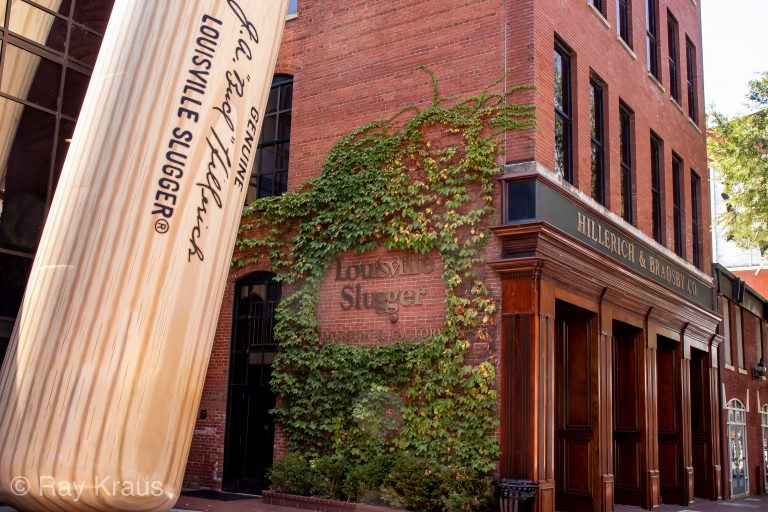Louisville Slugger Museum and Factory
"The pitcher has got only a ball. I've got a bat. So the percentage in weapons is in my favor, and I let the fellow with the ball do the fretting." Hank Aaron Fans focus on a pitcher's pitch. The question is which of his pitches is the best. Is it his fastball? His curve? Maybe his splitter? Or his slider? Regardless of the pitch, the ball is always the same. Notwithstanding the issues about possibly "juiced" balls, each pitcher uses the sport's current version of the ball. The ball itself is not terribly interesting unless it's the one used when something unusual happens. An ordinary ball becomes distinctive if it was used in a no-hitter or a record-breaking hit or home run. Besides that, one pitcher's baseball is not different from another's ball. Baseballs aren't exciting. Babe Ruth Bats - Babe Ruth Birthplace Museum Hitters’ bats are different. Each player’s bat is unique. Their bats are like medieval knights’ swords. Each one is different and has a special relationship with its owner. Similarly, the bat is what hitters take into battle, and fans revere them. Many fans who cherish the game and its traditions, want to see and hold their favorite players’ bats. I was in the middle of a drive through Ohio, and Pennsylvania. My goal was to see the Indians, Reds, and Pirates. Since Louisville - home of the Louisville Slugger Museum and Factory - is only 100 miles from Cincinnati, I had to include it in my itinerary. After all, the Louisville slugger was synonymous with the "official" Major League’s bat for most of its history. The Louisville Slugger a Brief History "Baseball just came as simple as the ball and bat. Yet, as complex as the American spirit symbolizes. A sport, a business and sometimes almost even a religion."Ernie Harwell The legend tells us that 17-year-old John Andrew "Bud" Hillerich was watching the major league Louisville Eclipse in 1884. At that game, the team's superstar, Pete Browning, whose nickname was "The Louisville Slugger," broke his bat. Bud, who was an apprentice at his father's woodworking shop, "J. Heinrich, Job Turning," offered to craft a replacement. When Browning got three hits with his new bat, Heillerach's baseball bat business was born. However, Bud's father, J. Fred Hillerach, was not interested in the baseball bat business. He didn't like baseball and didn't think bats would be a valuable addition to his burgeoning business. Instead, J. Fred felt that the future of the company was in his "very popular, swinging butter churn." Undeterred, Bud continued to build their bat-making business and even invented some patented manufacturing processes. As the bat business grew, the company trademarked the name “Louisville Slugger” in 1894. In 1897, Bud became a partner in the business, which became J.F. Hillerach & Son. As their business grew, they started garnering endorsements. The first was from the Pittsburgh Pirates' superstar shortstop, Honus Wagner, in 1905. In so doing, Wagner became the first professional athlete to endorse…


